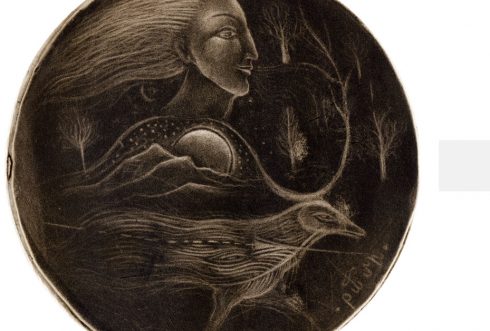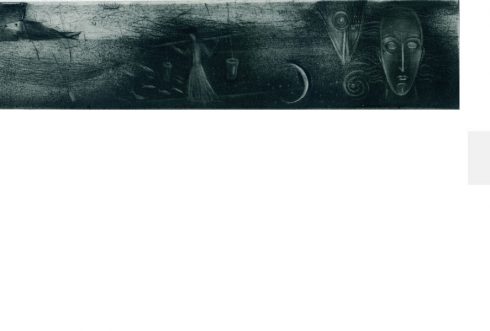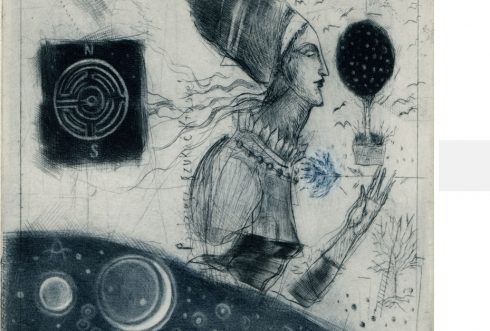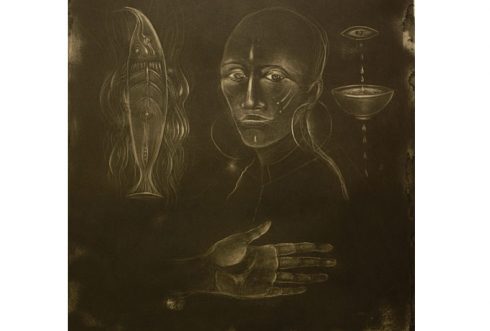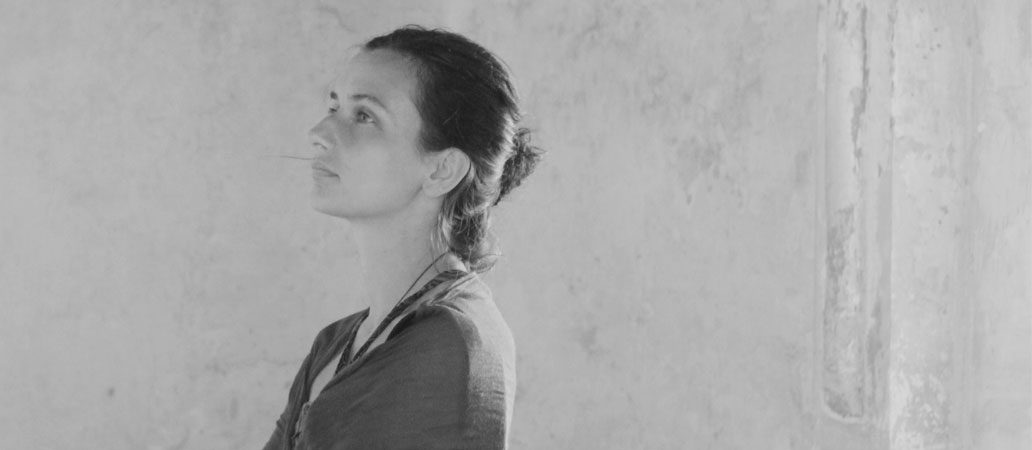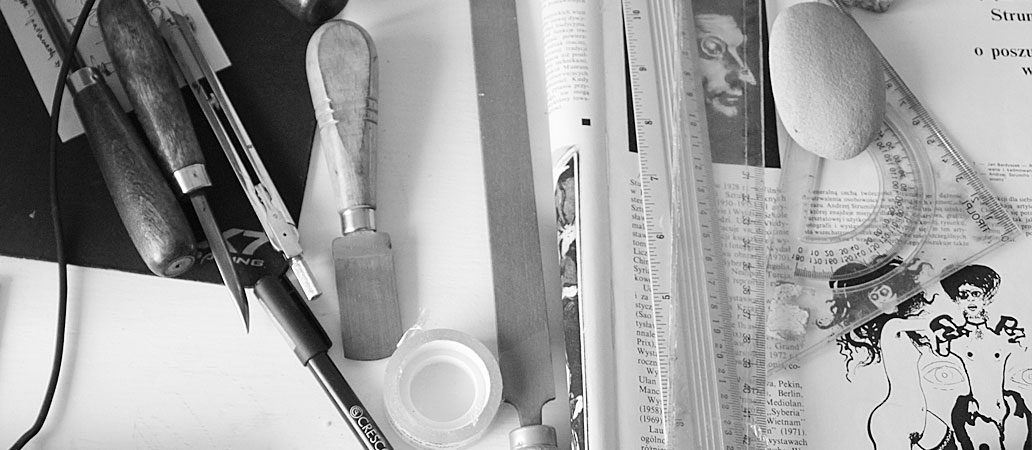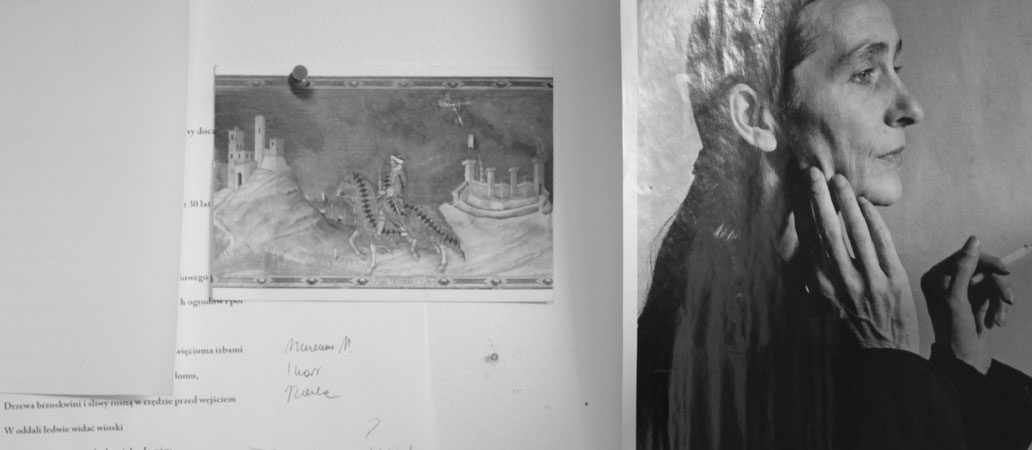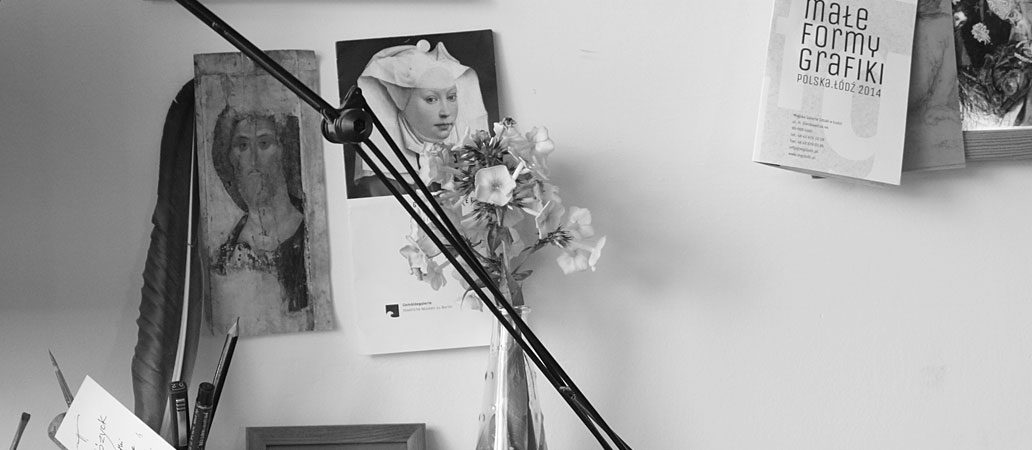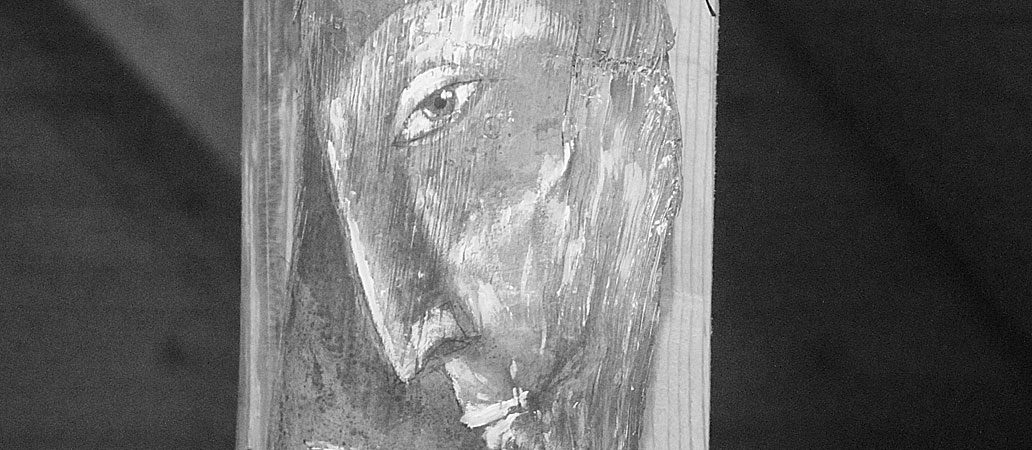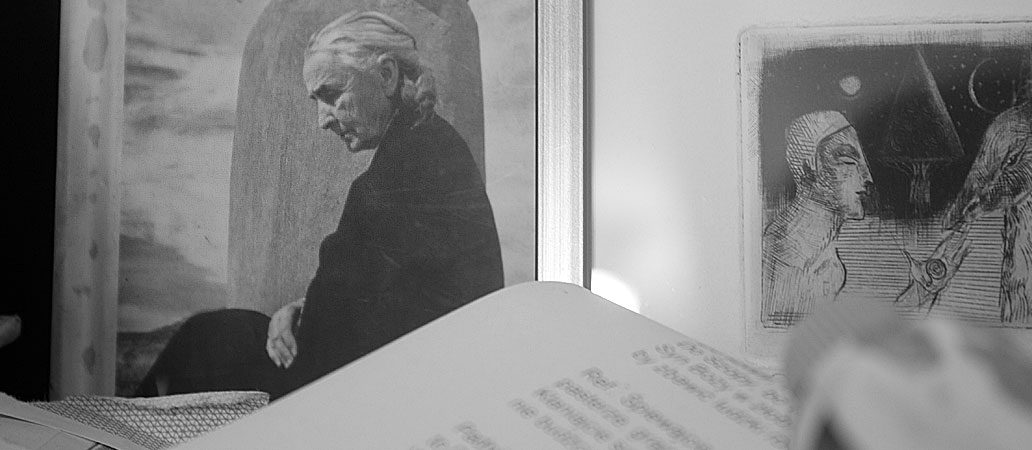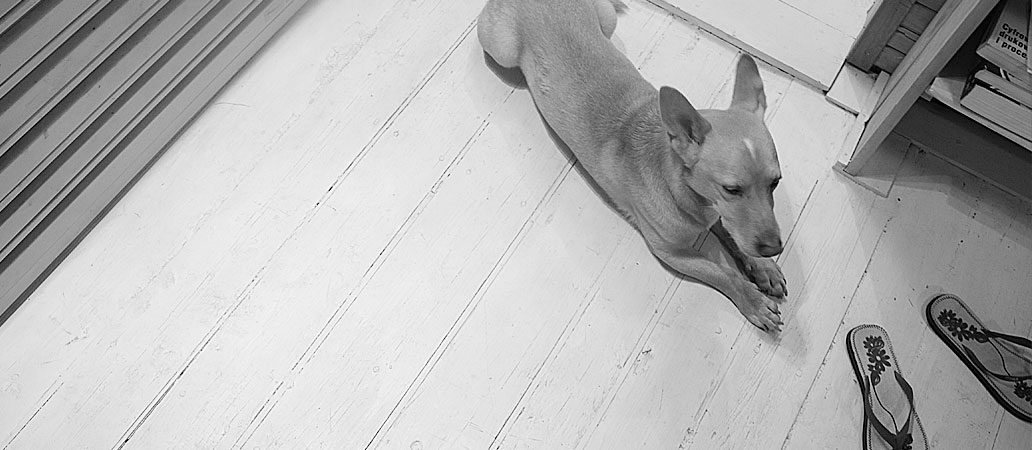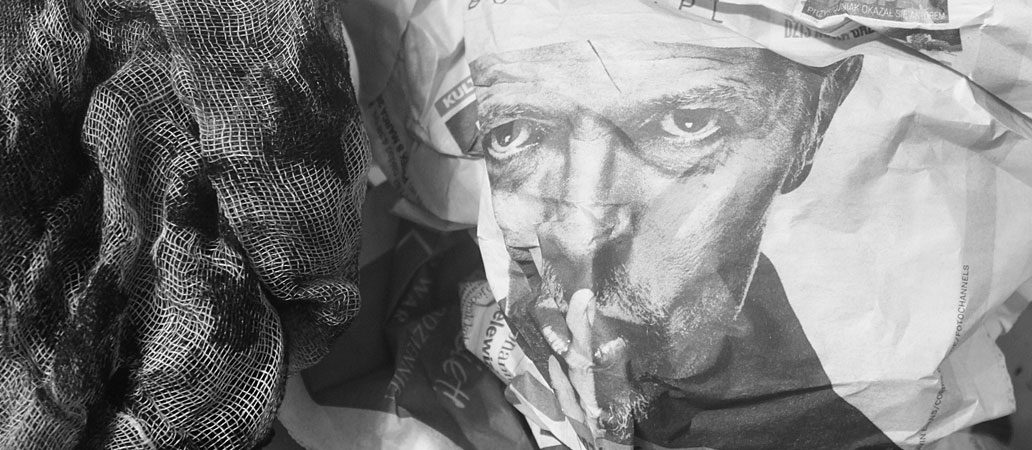printmaking: drypoint mezzotint engraving etching
Ewa Kutylak is a graduate of the Academy of Fine Arts in Wroclaw. She excels in intaglio using drypoint, mezzotint, engraving, etching, and also graphic design, illustration. She participates in Polish and international competitions and exhibitions. Her work can currently see and buy in Larry Warnock Fine Arts (Palm Springs, USA), Art Supplement (Göttingen, Germany), and in many Polish galleries.
Latest prints:
See collection of all prints »
Short description of the graphical techniques used
Graphic arts (printmaking), which creates Ewa Kutylak, are mostly drypoint, mezzotint, etching and engraving. These are metal matrix processing techniques (intaglio), where the ink goes beneath the original surface of the matrix, from which are created prints on a paper. Each print is numbered and their number depends on the choice of technology, usually it is 30 to 40 pieces.
Engraving – engravers use a hardened steel tool called a burin to cut the design into the surface of a copper plate (copperplate). Gravers come in a variety of shapes and sizes that yield different line types. The plate is inked all over, and then the ink is wiped off the surface, leaving only the ink in the engraved lines. The plate is then put through a high-pressure printing-press together with a sheet of moistened paper. The paper picks up the ink from the engraved lines, making a print. Work is characterized a thin and sharp ended line.
Drypoint – for this technique, the lines of the image are scratched directly into a plate with a sharp needle called the drypoint needle. While engraved lines are very smooth and hard-edged, drypoint scratching leaves a rough burr at the edges of each line. This burr gives drypoint prints a characteristically soft, and sometimes blurry, line quality. Because the pressure of printing quickly destroys the burr, drypoint is useful only for small editions, about thirty prints.
Mezzotint – a variant of engraving where the plate first is roughened evenly all over; the image is then brought out by scraping smooth the surface, creating the image by working from dark to light. Mezzotint is known for the luxurious quality of its tones: print is characterized subtle tonal transitions from black to white, soft halftones.
Etching – etching prints are generally linear and often contain fine detail and contours. In pure etching, a plate (usually copper, zinc or steel) is covered with a waxy ground. The artist then scratches off the ground with a pointed etching needle where he wants a line to appear in the finished piece, so exposing the bare metal. The plate is then dipped in a bath of etching solution (e.g. acid). It “bites” into the metal, where it is exposed, leaving behind lines to the plate. The remaining ground is then cleaned off the plate, and the printing process is then just the same as for engraving.
Aquatint – like etching, aquatint uses the application of acid to make the marks in the metal plate. Where the etching technique uses a needle to make lines that print in black (or whatever colour ink is used), aquatint uses powdered resin which is acid resistant in the ground to create a tonal effect. The tonal variation is controlled by the level of acid exposure over large areas, and thus the image is shaped by large sections at a time.
In the studio
Contact
If you are interested in graphics, workshops or other works, please contact me:
Ewa Kutylak
email: ewa@kutylak.com
mobile: +48 608 133 192
www: www.kutylak.com

